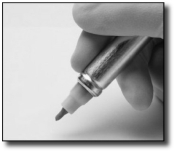by Gary Ewer, from “The Essential Secrets of Songwriting” website.
________________________
 A good lyric is not necessarily good poetry, and in many cases doesn’t need to be. With Gary Ewer’s songwriters’ e-books you can discover how your lyrics can make a connection with the listener, how to create chord progressions, how melodies should be contoured, and more. And you’ll get tons of chord progressions you can use right now.
A good lyric is not necessarily good poetry, and in many cases doesn’t need to be. With Gary Ewer’s songwriters’ e-books you can discover how your lyrics can make a connection with the listener, how to create chord progressions, how melodies should be contoured, and more. And you’ll get tons of chord progressions you can use right now.
For $37, purchase and download all 6 songwriting e-books.
________________________
It’s obvious when you listen to most songs that verse melodies differ from chorus melodies. But the same is true for lyrics. You need to write a certain kind of lyric for verses, and that approach needs to change for choruses. Here’s how that works.
We already know that most chorus melodies are generally higher in pitch than verse melodies. The reason for this is actuall y rooted in the lyric. Verse lyrics should be narrative, because verses are where we tell the listener “what’s going on.” Choruses are more emotive; the chorus is where we tell the listener “how we’re feeling” about what’s going on, and what our resultant state of mind is.
y rooted in the lyric. Verse lyrics should be narrative, because verses are where we tell the listener “what’s going on.” Choruses are more emotive; the chorus is where we tell the listener “how we’re feeling” about what’s going on, and what our resultant state of mind is.
One of the best ways for the singer to communicate this higher emotive quality of a chorus is to use higher pitches. As we sing higher, we convey more emotion as we access the edgier part of our range.
But simply singing higher isn’t enough. Your lyric needs to be less about what’s going on, and more about how you’re feeling.
So as you write your lyric, keep the following progression in mind:
- Don’t use verse 1 to tell the listener how your feeling. It’s too soon. You’d be trying to elicit a response from the audience, and you haven’t given them anything to commiserate with you about. Use this verse to set the stage, to tell the listener mainly what the situation in your life is, and mention your own emotional response only as it plays a part in that story. This part of your song should be you saying, “This is what’s happening.”
- The bars leading up to the chorus (“pre-chorus”, or “rise”) should be a place where you can start to modify your lyric. It’s as if you want to say, “I can’t believe this is happening to me!” Allow more emotional response to come through.
- The chorus should be you fully opening up emotionally. You should be saying, “This is how I’m feeling.”
- The second verse is still narrative, but you can interject more emotion-based observations into your lyric. After all, the listener has already heard your emotional response, so while you are expanding on the story, you can allow more of the emotion to come through. Perhaps consider alternating observations-based lyrical lines with emotional-response-based lines.
- The lyric of the second chorus is usually identical to the first, but if it’s different, allow for deeper emotions on key words, and perhaps move the melody higher on certain key emotion-laden words.
- The bridge needs to expand on how you’re feeling, and in addition, the bridge can be a great place to add to the story you’ve set up in verses 1 and 2.
As you can see, lyrical development is an important part of good writing. Developed properly, a good lyric will pull the listener along and keep them listening, and can do that as effectively as a good hook. A lyric that feels emotionally disorganized will simply sound “whiny” and “complainy”. But properly structuring your melody, you can allow the listener to relate to the topic. The best response will be if listeners find themselves saying, “Hey, I’ve been there!”
____________________
Learn even more about how good lyrics should work. See Gary Ewer’s songwriting e-books here.









